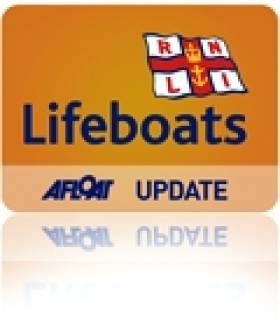Displaying items by tag: Baginbun
Marine Notice: Offshore Support works for Horizontal Directional Drilling Operations at Baginbun Beach in Co Wexford
The Department of Transport has been advised that Greenlink Interconnector Ltd (GIL) is developing an electricity interconnector between the southeast of Ireland, from Great Island in Co Wexford to the southwest of Wales at Pembroke in Pembrokeshire.
To allow the offshore cable to be pulled onshore in a later stage, a shore-based sub-contractor Very Large Crude Carrier (VLCV) has completed drilling and diving operations at the Baginbun Beach landfall site for installation of two high-density polyethylene (HDPE) ducts with a bell mouth. Both pipes are stabilised with six rock bags per pipe.
All operations related to the installation of the HDPE ducts are completed. The HDPE pipes and rock bags will be in place until effective high-voltage direct current (HVDC) cable installation, which is expected to start on Monday 1 April. The dive preparations will start from around Wednesday 20 March.
Coordinates and a diagram of the survey area as well as contact details and more can be found in Marine Notice No 09 of 2024, attached below.
#RNLI - Fethard-on-Sea RNLI were diverted from a planned exercise last weekend following a report of a young man in extreme difficulty after he launched a kayak near Baginbun Head to rescue his dog from a steep gully.
The young man and his girlfriend, both from Co Wexford, were walking with their dog near Baginbun Headland on the afternoon of Sunday 22 March when the dog fell into the gully while following a seagull.
The man, in concern for his dog, tried to rescue it by getting his kayak, launching it, and going into the gully. Sea conditions were calm at the time and the man was an accomplished boatman with a good knowledge of the seas around Baginbun.
However, as he entered the gully he realised that the sea was rougher than he anticipated. His kayak overturned and he realised that he was going to have difficulty getting out to open water.
Conditions inside the gully were worsening as the tide started to come in. The man alerted his girlfriend who remained on top of the gully to raise the alarm.
Fethard-on-Sea RNLI were on a planned training exercise in the area when the call came through. Lifeboat helm Hugh Burke immediately had the boat launched at Fethard Harbour and went to Baginbun.
The RNLI lifeboat crew established contact with the trapped man and assessed the situation. The lifeboat helm decided to manoeuvre the lifeboat into the gully stern first. The man was rescued by the lifeboat crew but sadly his dog died as a result of the fall.
A coastguard helicopter was on standby in the vicinity in case the man required hospitalisation but this was not necessary.
The RNLI would like to remind the public of the danger of trying to rescue dogs that get into difficulty in the sea or on cliffs and advised the public to contact the Irish Coast Guard.





























































